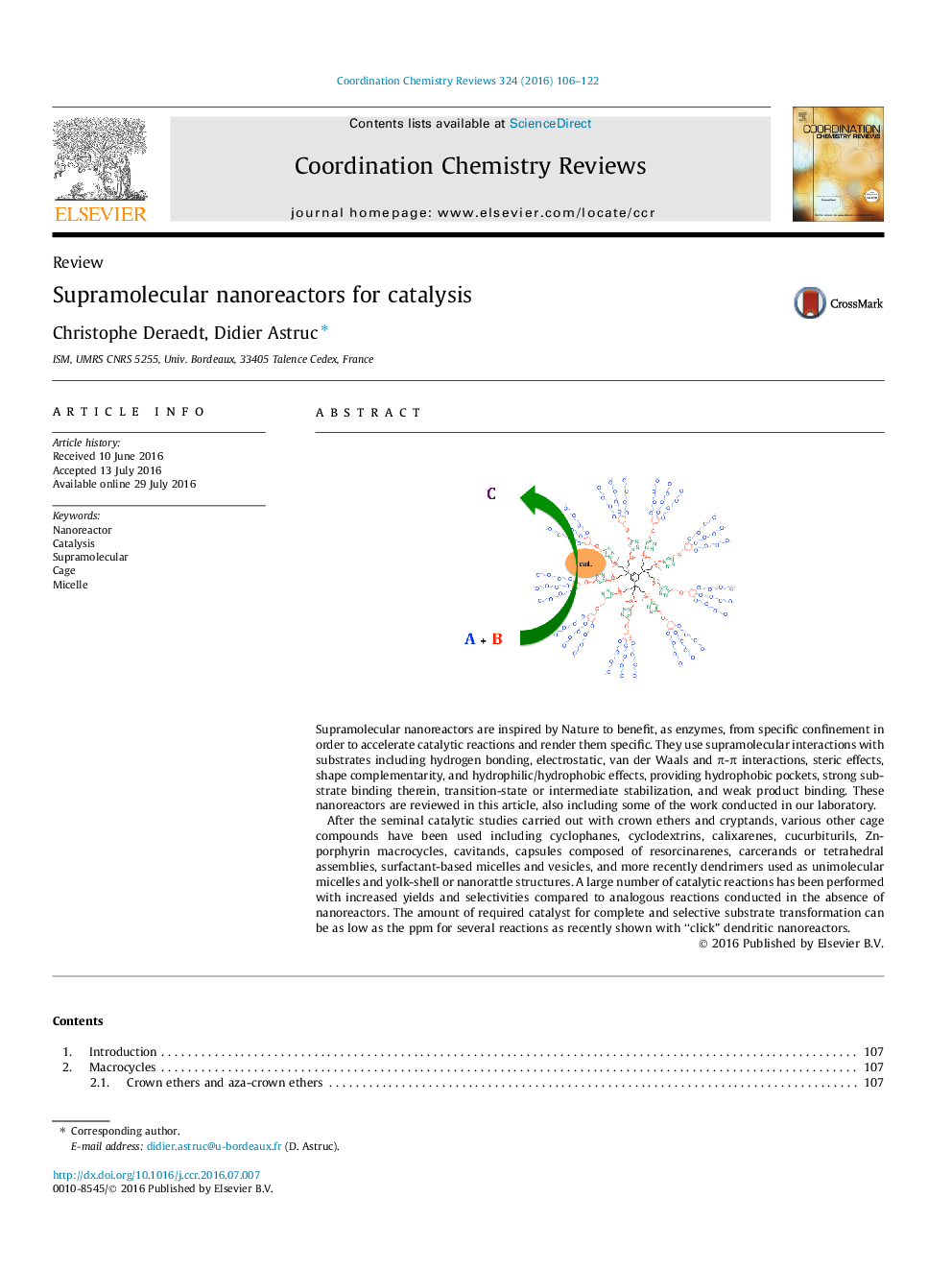| Article ID | Journal | Published Year | Pages | File Type |
|---|---|---|---|---|
| 1299202 | Coordination Chemistry Reviews | 2016 | 17 Pages |
Figure optionsDownload full-size imageDownload high-quality image (120 K)Download as PowerPoint slideSupramolecular nanoreactors are inspired by Nature to benefit, as enzymes, from specific confinement in order to accelerate catalytic reactions and render them specific. They use supramolecular interactions with substrates including hydrogen bonding, electrostatic, van der Waals and π-π interactions, steric effects, shape complementarity, and hydrophilic/hydrophobic effects, providing hydrophobic pockets, strong substrate binding therein, transition-state or intermediate stabilization, and weak product binding. These nanoreactors are reviewed in this article, also including some of the work conducted in our laboratory.After the seminal catalytic studies carried out with crown ethers and cryptands, various other cage compounds have been used including cyclophanes, cyclodextrins, calixarenes, cucurbiturils, Zn-porphyrin macrocycles, cavitands, capsules composed of resorcinarenes, carcerands or tetrahedral assemblies, surfactant-based micelles and vesicles, and more recently dendrimers used as unimolecular micelles and yolk-shell or nanorattle structures. A large number of catalytic reactions has been performed with increased yields and selectivities compared to analogous reactions conducted in the absence of nanoreactors. The amount of required catalyst for complete and selective substrate transformation can be as low as the ppm for several reactions as recently shown with “click” dendritic nanoreactors.
